Even the most casual bird observer will spot that coots are not bald. The expression ‘bald as a coot’ comes from the featherless white patch or ‘frontal shield’ just above the bird’s bill. Some might say ‘common as a coot’ is more appropriate, with this bird being a familiar sight on our waterways. However, if you pause to watch a coot for a while, the phrase ‘bold as a coot’ becomes fitting. Its striking monochrome appearance suits its confident – and often combative – demeanour.
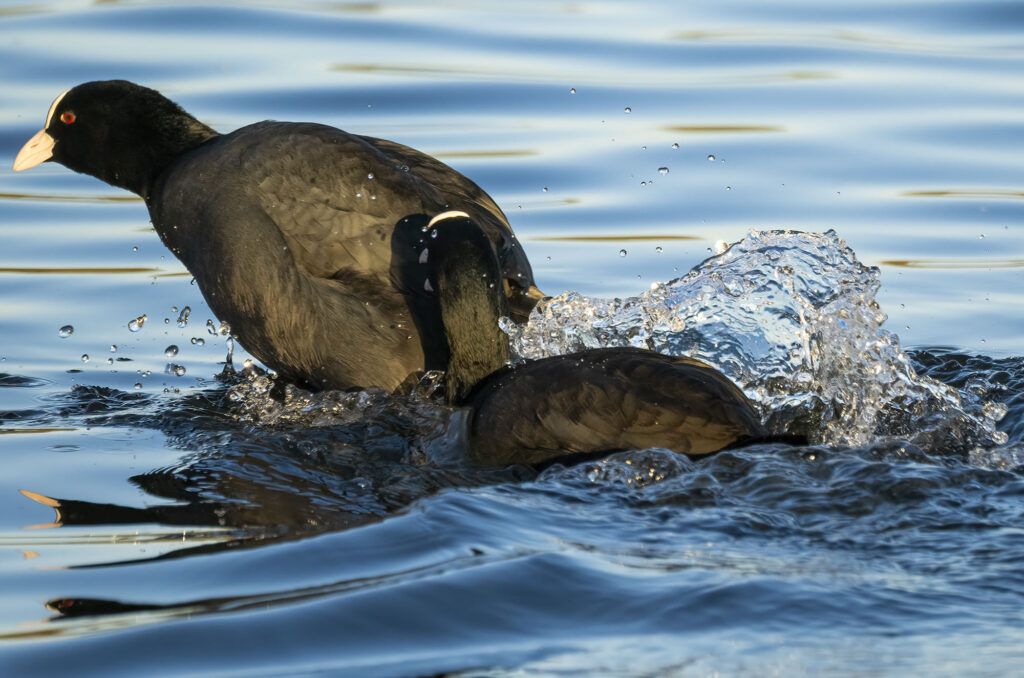
When I first picked up my camera in 2010, coots were one of the species I pointed my lens at. While the moorhens crept around at the water’s edge, partially obscured by reeds, the coots always seemed to be in the open, ready for their close-up. Perhaps that is why I often overlooked them – they were too accessible, too predictable, and even a bit boring. I was desperate to photograph exciting wildlife, and a coot diving to catch invertebrates or pulling at bits of water weed didn’t seem worth my time.
Family friction
That was until the first spring I saw a coot with chicks. Suddenly, a bird I previously considered dull became fascinating. Coots are monogamous birds, meaning they mate with only one partner throughout the breeding season. After the female lays a clutch of six to nine eggs in a large and untidy-looking nest of water weed, both parents take turns incubating the eggs.
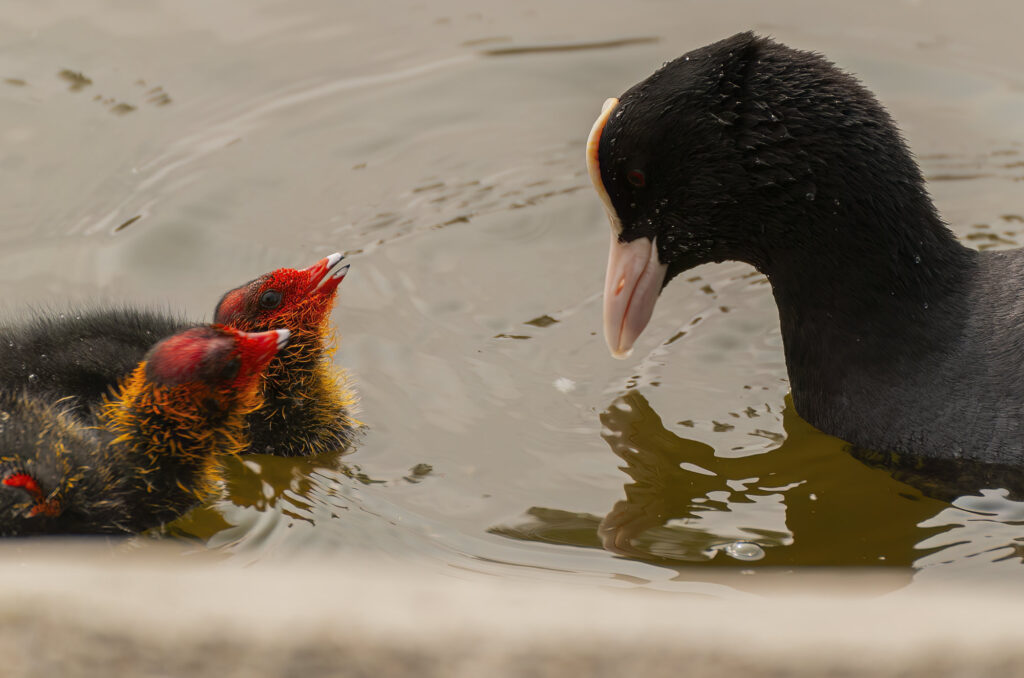
Once the eggs hatch, the real challenge begins as the parents tirelessly feed and protect their downy offspring – often with the male and female splitting the brood and attending to their assigned chicks. And, boy, are those chicks squeaky and insistent! When I first began photographing the family shown in the image above, all was fine. The parent was attentive, and the young were readily accepting food.
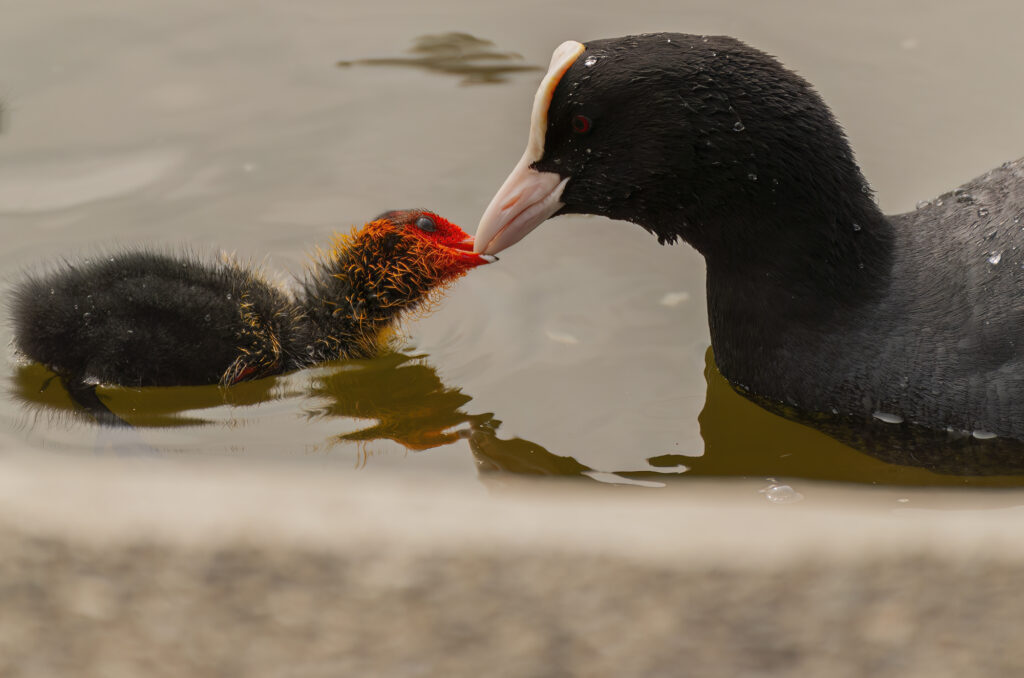
What started as cute quickly descended into carnage, as the parent appeared to become frustrated with the incessant cheeping following it around and began to attack one of its chicks.
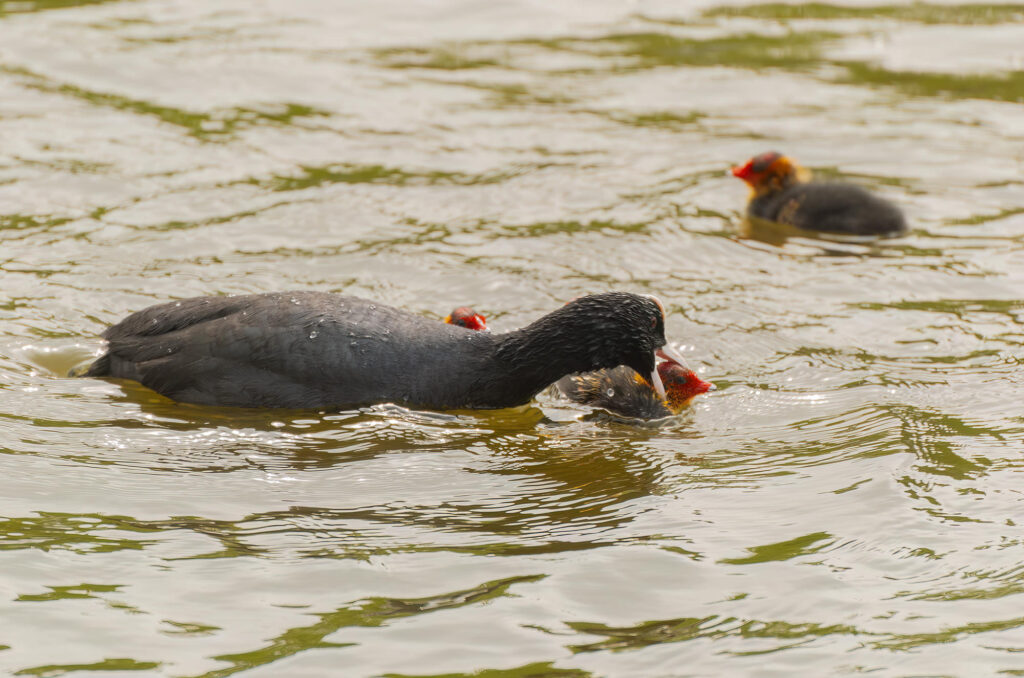
I always thought there was something sinister behind those red eyes. It turns out that coots are known to have infanticidal tendencies, sometimes shaking and pecking their young to death. While this often appears like a reaction to the begging behaviour of their chicks, it could be a strategy for reducing the brood by getting rid of the weakest individuals when there is a lack of resources. It may also be due to the parents realising that they are raising an interloper. Either way, it’s a tough watch.
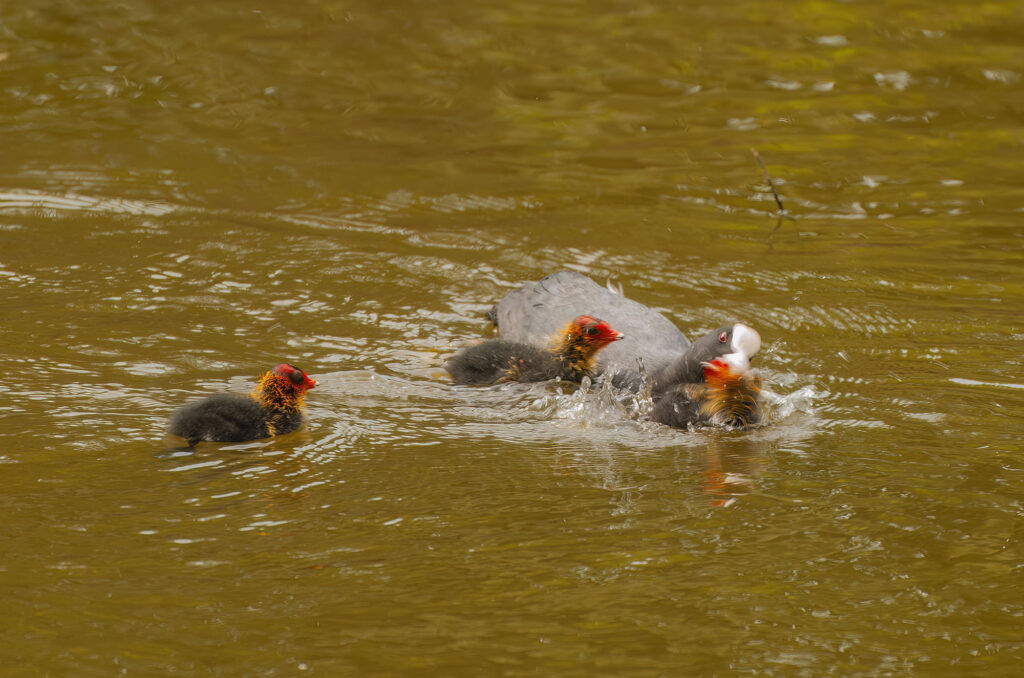
Coot chicks are independent within two months of hatching – assuming they avoid the wrath of their parents and survive that long.
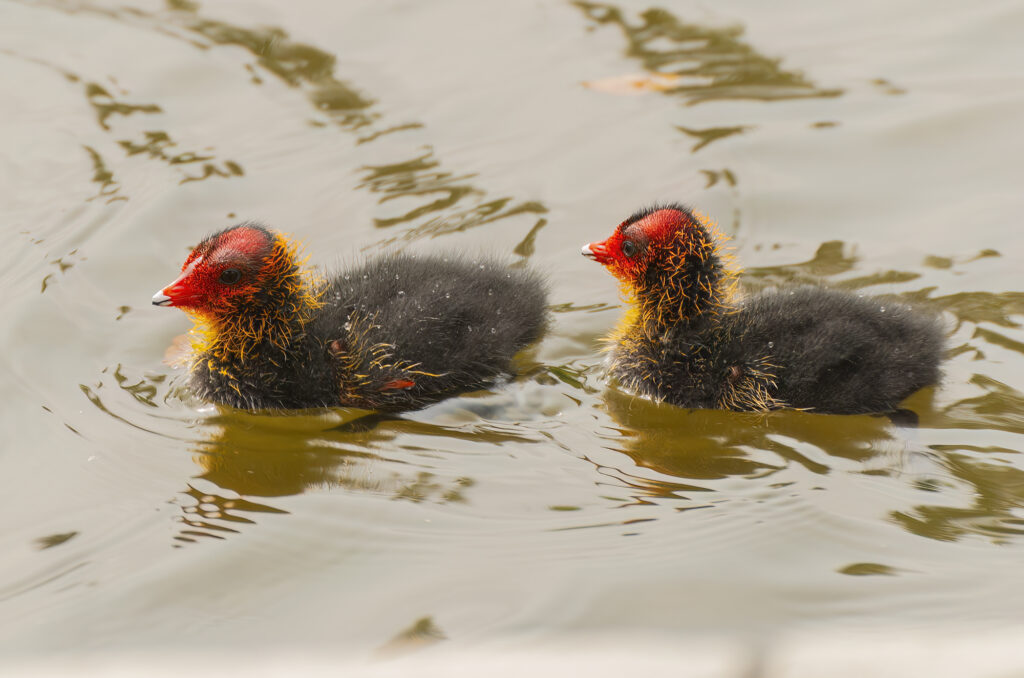
Bobbing boxers
Like all black and white birds, coots can be problematic to photograph – as correctly exposing both the white and dark areas on the bird can be tricky. You may also want to capture those striking (aka murderous) red eyes. Low winter sunlight is perfect for illuminating these birds without producing harsh highlights and shadows.
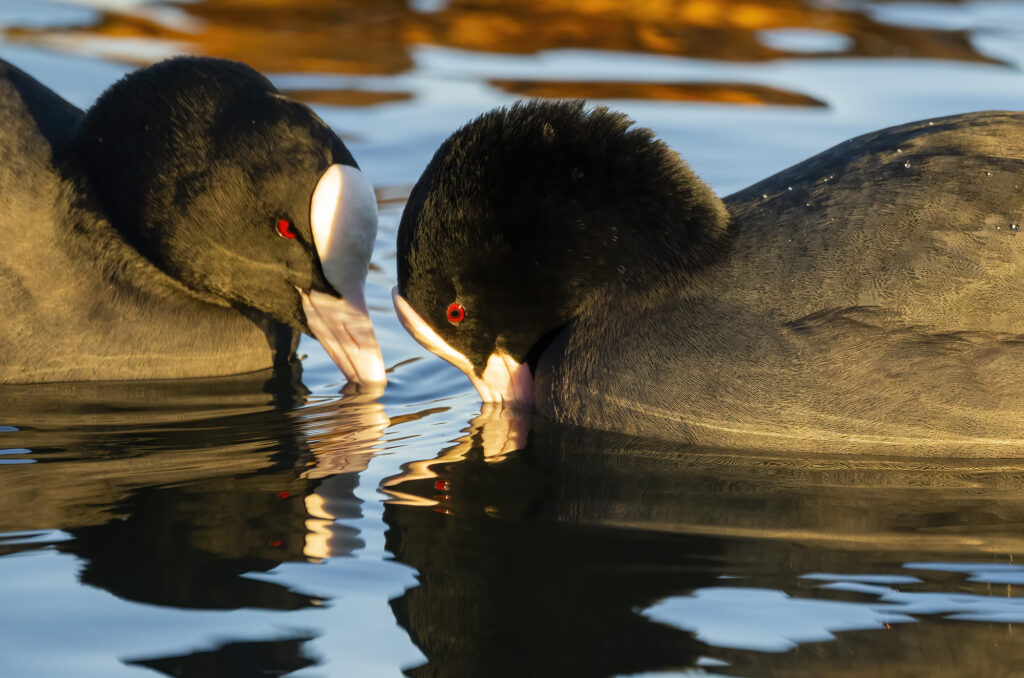
Finding a spot with several of these birds feeding is ideal for capturing a bit of coot conflict. That white frontal shield is held low in aggressive displays, as you can see in the image above. Incidentally, the size of the shield is an indication of dominance in coot society. Wait for long enough, and you will see a fight break out. If you’re really lucky, two birds will have a boxing match with their feet.
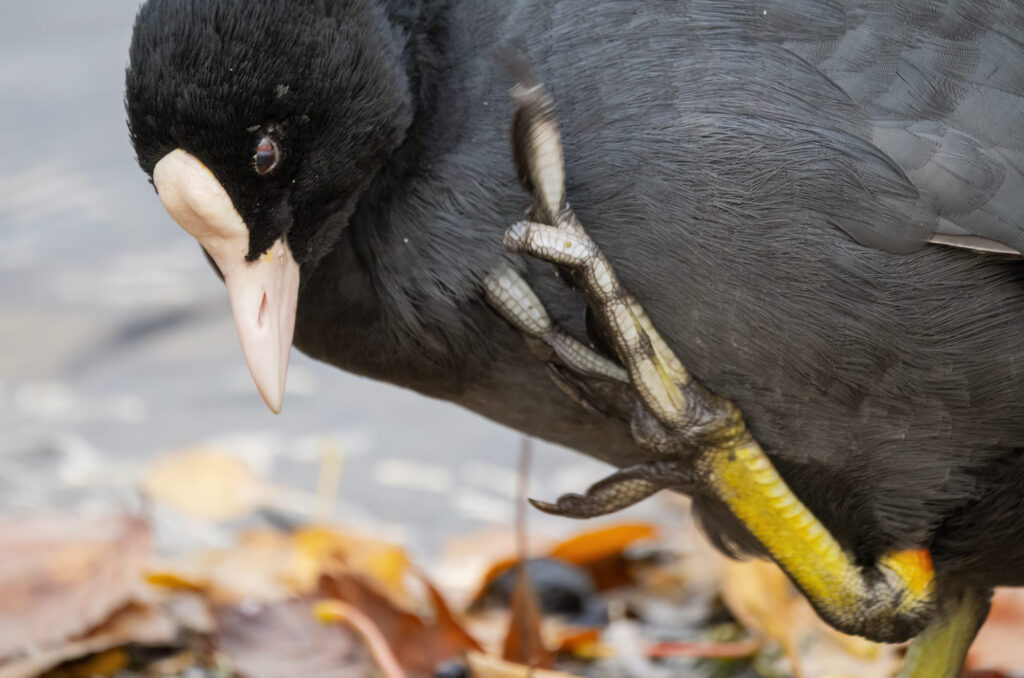
And while these bolshy birds provide plenty of opportunities for action shots when having scraps with each other, it is also worth focusing on the details of their incredible anatomy. One of the most striking features of coots is their large feet, equipped with lobed toes that aid in swimming and walking on soft surfaces like mud. Their feet act like paddles, allowing them to manoeuvre effortlessly through the water as they forage for aquatic plants and invertebrates. Despite their aquatic prowess, coots are equally adept at navigating on land, exhibiting a distinctive bobbing gait as they move about.
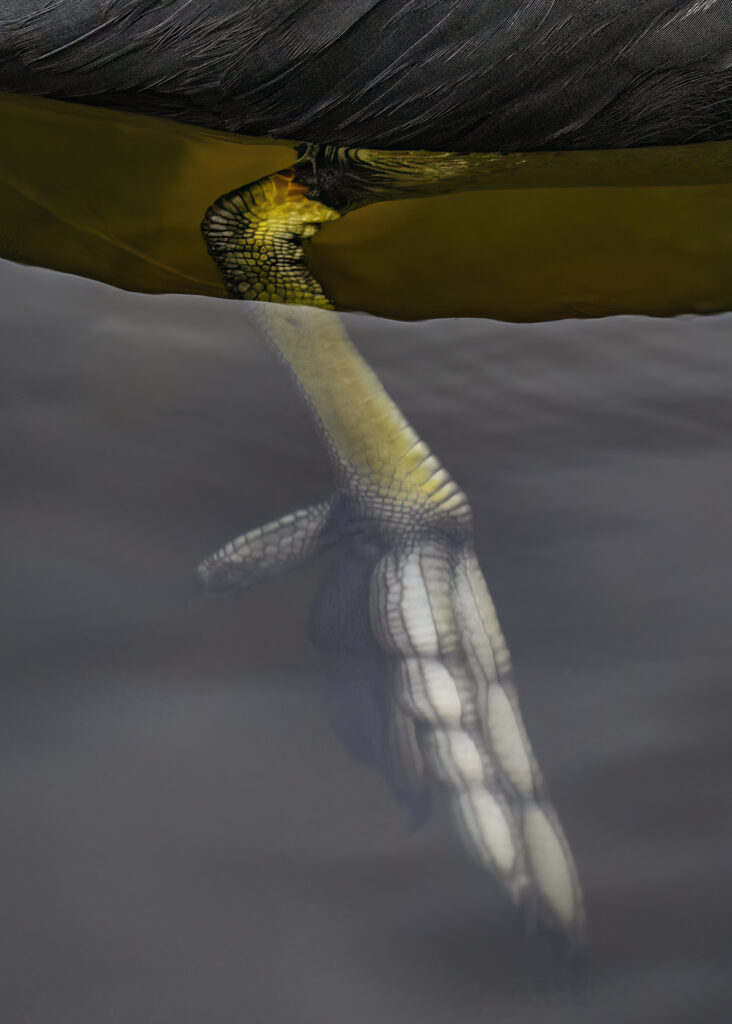
Coots may not always steal the spotlight like their more colourful counterparts, but their sinister stare and fascinating behaviours make them a beloved fixture of UK waterways. Whether you are observing them gliding gracefully across a pond, watching the tender moments between parent and chick, or witnessing them trying to murder their own, coots offer a glimpse into the truly wild side of nature in your local park. So next time you find yourself near a body of water, take a moment to appreciate these bold – not bald or boring – birds.

